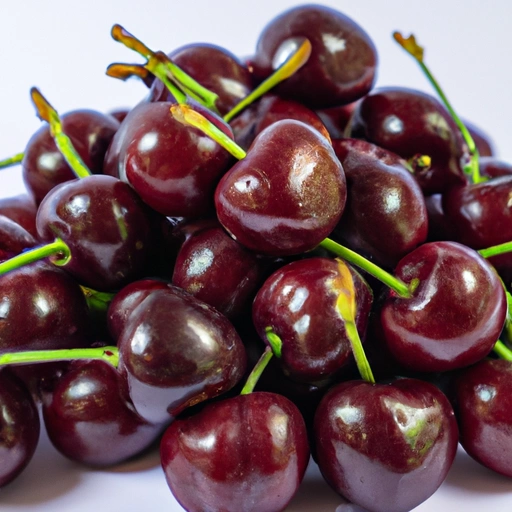Cherry
Description

Cherries are small, round stone fruits that come in a variety of colors and flavors. The two most common types are sweet cherries (Prunus avium) and sour or tart cherries (Prunus cerasus). Sweet cherries are typically eaten fresh, while sour cherries are often used in cooking and baking. Cherries are enjoyed around the world and are celebrated for their delicious taste and potential health benefits.
Common uses
Cherries are commonly enjoyed fresh, dried, or as a juice. They are also used in various sweet and savory dishes, including pies, tarts, jams, and sauces. Sour cherries, with their tart flavor, are particularly popular in baked goods and desserts.
Nutritional value
Calories
A cup of fresh, sweet cherries with pits (about 138 grams or 4.87 ounces) contains approximately 87 calories (364 kJ).
Protein
This same serving size offers about 1.5 grams of protein.
Fat
Cherries are low in fat, providing less than 0.5 grams per cup.
Carbohydrates
Most of the calories in cherries come from carbohydrates, with a cup containing about 22 grams.
Vitamins
Cherries are a good source of vitamin C, providing about 10 milligrams per cup. They also contain vitamin A, with a cup offering about 97 international units (IU).
Minerals
Cherries provide essential minerals such as potassium, with a cup containing around 306 milligrams. They also have smaller amounts of calcium, magnesium, and phosphorus.
Health benefits
Cherries are rich in antioxidants and anti-inflammatory compounds, which may help reduce the risk of chronic diseases. The fruit also contains melatonin, which can aid in sleep regulation. Their high fiber content can benefit digestive health, and the presence of potassium helps to maintain cardiovascular health.
Potential risks
Some individuals may experience allergic reactions to cherries. Due to their natural sugar content, people with diabetes should monitor their intake. Cherry pits contain cyanide compounds and should not be consumed.
Common recipes
Cherries are featured in many recipes, from the classic American cherry pie to European Black Forest cake. Sour cherry soup is a traditional Hungarian dish, and cherry clafoutis is a beloved dessert in France.
Cooking methods
Cherries can be eaten raw, roasted, poached, or baked. They are often processed into preserves, compotes, and syrups.
Pairing with other ingredients
Sweet cherries pair well with almonds, chocolate, and creamy desserts, while sour cherries complement savory dishes such as roasted meats and cheeses.
Summary
Cherries are versatile fruits that enrich our diet with their unique taste and numerous health benefits. They can be incorporated into a variety of culinary creations, providing both delightful flavors and nutritional advantages. Whether enjoyed fresh, in a homemade pie, or as part of a savory sauce, cherries are a cherished ingredient across many cultures and cuisines.